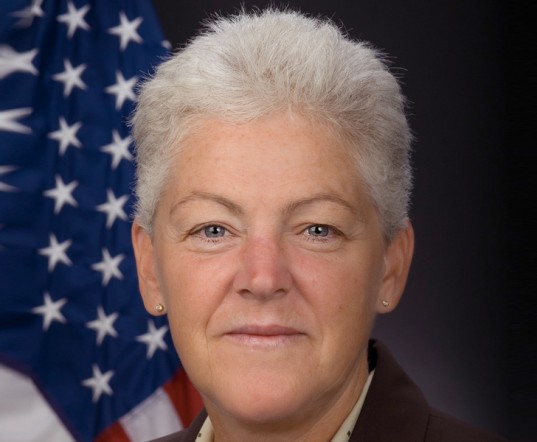Seven days before the advent of a new presidential administration, the U.S. Environmental Protection Agency has locked in planned auto-emission standards through 2025.
The emission limits tie directly to fuel-efficiency rules issued by the NHTSA, effectively requiring those rules to stay the same as well.
Announcing its final determination this morning, EPA administrator Gina McCarthy said the decision to maintain existing limits was based on an extensive review of the technical record.
A review of automakers' record in meeting emission limits from 2012 through 2017 indicates that not only have they done so, it has cost the industry and consumers less than predicted.
DEEP DIVE: EPA keeps emission rules to 2025; what happens under Trump?
Part of the regulation for the second part of that period, covering 2018 through 2025 model-year vehicles, required the agency to assess progress in a "mid-term review."
Originally expected to be finalized by the end of 2018, that review was accelerated when the EPA released a voluminous Technical Assessment Report in July that telegraphed the likelihood that it would keep the rules in place.

Gina McCarthy, nominee for Environmental Protection Agency administrator
The EPA's preliminary determination, released at the end of November, said formally that based on the evidence submitted by automakers and the public, it saw no reason to alter or delay the standards.
The day after the presidential election, the Alliance of Automobile Manufacturers—a trade group representing Ford, GM, Toyota, Volkswagen, and other makers—sent a letter to President-Elect Trump asking that the standards be delayed, changed, or even abolished.
The alliance today criticized the EPA's determination, charging that it would "compromise" both the affordability of new-car and U.S. auto-worker jobs.
It said it hopes to work with regulators, presumably under the new administration, to "find a prudent compromise path forward that avoids an unnecessary and counterproductive regulatory collision."
MUST READ: EPA releases final heavy-truck emissions rules to 2027 (Aug 2016)
Environmental and consumer groups, on the other hand, were unanimous in their praise of McCarthy's action.
The Consumer Federation of America, Consumers Union, Environment America, the Natural Resources Defense Council, and others issued statements supporting the emission rules.
While the EPA determination was widely reported to affect fuel-economy rules, the environmental agency can only regulate vehicle emissions.

Gas pump
Regulations on fuel efficiency were independently set by the National Highway Traffic Safety Administration until 2012.
That year, following a Supreme Court decision, the EPA first regulations on emissions of carbon dioxide, a climate-change gas, were issued.
Because carbon-dioxide emissions are tied directly to the amount of fuel a vehicle burns, the two agencies had to coordinate their standards for the first time.
CHECK OUT: You'll never know the EPA ratings for heavy-duty pickups: here's why
And because the powerful California Air Resources Board had issued state regulations that limited carbon-dioxide emissions, it too was in on those talks.
Fearing different regulations to sell vehicles in that state—the largest car market by far in the U.S.—automakers agreed to adopt standards that would satisfy the California regulators and make them national.
The NHTSA has not finalized its comparable Corporate Average Fuel Economy standards, setting up at least a theoretical possibility that the two agencies' rules could come into conflict if it delays or alters those CAFE requirements.
Changing the EPA's rules, which are now officially adopted, would be a lengthy and complicated process, Washington insiders note.
Lengthy hearings would be required, including public comment, and the agency's decisions are required to be based on science.
_______________________________________













